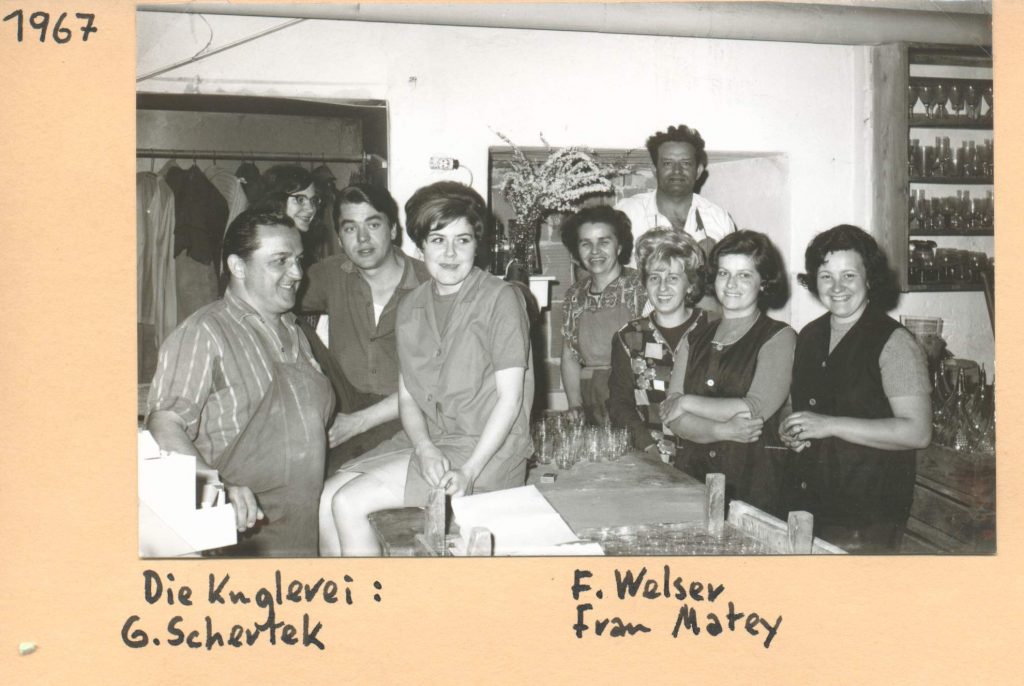In western Styria, high-tech utility glass production is complemented by cross-border handicrafts.
The west Styrian glass industry is closely related to the coal mining of the 19th century.
The roots of Styrian glass go back a long way. A small glass workshop with a melting furnace in the Roman settlement of Flavia Solva near Leibnitz points to an early processing of glass in Styria. From the Middle Ages to the 17th century Forest glassworks settled in several Styrian and now Slovenian forest areas.
With the beginning of industrialization, glass factories were built near coal mines in western Styria. The introduction of the Siemens melting furnace in 1856, which uses coal gas and air to achieve higher temperatures more efficiently, and the use of semi-automatic machines for the production of bottles, utility glass and window glass laid the foundation for an industrial work rhythm and growing mass production. Nevertheless, craftsmanship and the use of various finishing techniques always played a role.
Between industry and handicrafts
In western Styria, high-tech utility glass production is complemented by cross-border handicrafts.
The 20th century brought some company closings and mergers with it. Investments in fully and semi-automatic production technology, which allows commercial glass to be produced quickly and cheaply, have contributed to the survival of the Styrian glass industry. Technically demanding series and one-off pieces were created in the Bärnbach mouth blowing works until 2010. A former factory building was converted into a museum and glass center with a sight glass furnace in the 1980s, which for some time also hosted international glass symposiums. The show workshop, which was expanded in 2020, is an international center for high-quality handicrafts in cooperation with the Slovenian glass school Rogaška-Slatina.








